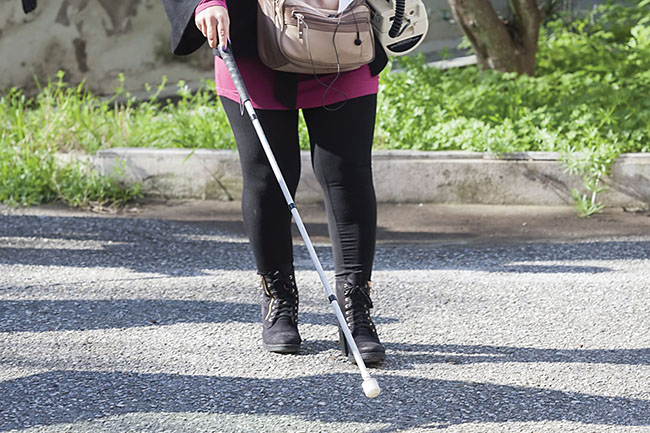 A PRACTICAL list of actions that businesses can take to help blind and partially sighted staff return safely back to work has been produced by the Royal National Institute of Blind People.
A PRACTICAL list of actions that businesses can take to help blind and partially sighted staff return safely back to work has been produced by the Royal National Institute of Blind People.
Martin O’Kane, RNIB Specialist Lead for Employment, said: “Since the easing of lockdown, we have developed five key steps based on government guidance that will make a workplace safer for employees with sight loss as they return to their place of work.
“Our Employment Team is available for employees with sight loss to discuss queries that they have on returning to work and sometimes we step in and make sure employers are supportive of their needs.”
Five practical steps:
1. Carry out a COVID-19 risk assessment
Before restarting work, employers should ensure the safety of the workplace and consider employees with sight loss by:
- Carrying out a risk assessment.
- Consulting with their blind or partially sighted staff or trade unions.
- Sharing the results of the risk assessment with their workforce and on their website in an accessible format for all staff.
2. Develop cleaning, handwashing and hygiene procedures
Employers should increase the frequency of hand washing and surface cleaning by:
- Encouraging people to follow the guidance on hand washing and hygiene ensuring that this is communicated in an accessible format.
- Providing hand sanitiser around the workplace, in addition to washrooms and informing employees with sight loss as to the location of these.
- Frequently cleaning and disinfecting objects and surfaces that are touched regularly.
- Enhancing cleaning for busy areas.
- Setting clear use and cleaning guidance for toilets.
- Providing hand drying facilities – either paper towels or electrical dryers.
3. Help people to work from home
Working from home may be a more suitable option for a member of staff who has sight loss.
- Discuss home working arrangements with them.
- Ensure they have the right equipment, for example remote access to work systems and assistive technology.
- Include them in all necessary communications.
- Look after their physical and mental wellbeing.
4. Maintain a suitable social distance
Where possible, maintain a two-metre distance between people in the workplace, but where that isn’t possible keeping one-metre apart with risk mitigation is acceptable. There are challenges for people with sight loss to social distance but there are some actions which can help. Employers should speak to their staff to ascertain how they will feel most safe and comfortable.
Working from home may be a more suitable option for some members of staff who have sight loss, or putting the onus on sighted staff to keep socially distanced from colleagues who are blind or partially sighted.
- The onus is on sighted staff to keep a suitable distance from colleagues who are blind or partially sighted.
- Put up signs to remind workers and visitors of social distancing guidance in an accessible format.
- Avoid sharing workstations.
- Use floor tape or paint to mark areas to help people keep to a two-metre distance should be done using strong colour contrast and non-reflective material.
- Arrange one-way traffic through the workplace if possible.
- Switch to receiving visitors by appointment only if possible.
Measures such as social distancing have turned the world upside down for people with sight loss, with one-way systems and visual markers being almost impossible for those with a vision impairment to navigate.
To ensure employers are aware of how-to best support blind and partially sighted customers during this time, RNIB has created a guide on the best practices of how to make customer spaces more accessible as part of its World Upside Down campaign.
5. Manage the risk of transmission
Where it’s not possible for people to be two metres apart, employers should do everything practical to manage the transmission risk by:
- Considering whether an activity needs to continue for the business to operate.
- Keeping the activity time involved as short as possible.
- Using screens or barriers to separate people from each other.
- Using back-to-back or side-to-side working whenever possible.
- Staggering arrival and departure times.
- Reducing the number of people each person has contact with by using “fixed teams or partnering”.
For further information on how businesses can support their blind and partially sighted staff in working during the coronavirus pandemic, please visit www.rnib.org.uk/employer
RNIB Helpline on 0303 123 9999 or visit www.rnib.org.uk
- Check out new job opportunities at Jooble …

